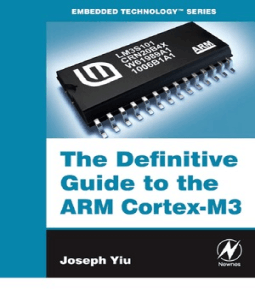
Book Description
The Cortex-M3 processor is a welcome newcomer to the world of embedded processors. This processor is low in cost and power consumption and highly reconfigurable. This guide not only provides an overview of the Cortex-M3 processor to embedded hardware and software engineers, but details all of the benefits that one can achieve with its use. An introduction to the new architecture, instruction set summary, hardware features, and an overview of the debugging system are all included. Application examples are presented including basic steps of software development using ARM tools and the GNU toolchain.
Table of Contents
Introduction
Overview of the Cortex-M3
Cortex-M3 Basics
Instruction Sets
Memory Systems
Cortex-M3 Implementation Overview
Exceptions
The NVIC and Interrupt Control
Interrupt Behavior
Cortex-M3 Programming
Exception Programming
Advanced Programming Features and System Behavior
The Memory Protection Unit
Other Cortex-M3 Features
Debug Architecture
Debugging Components
Getting Started with Cortex-M3 Processor
Porting Applications from the ARM7 to the Cortex-M3
Starting Cortex-M3 Development Using the GNU Tool Chain
Getting Started with the KEIL RealView Microcontroller Development Kit
Programming the Cortex-M3 Microcontrollers in NI LabVIEW
Download
You can download this book from any of the following links. If any link is dead please feel free to leave a comment.
Download Here
Copyright Disclaimer
This site does not store any files on its server. We only index and link to content provided by other sites. Please contact the content providers to delete copyright contents if any and email us, we'll remove relevant links or contents immediately.


















